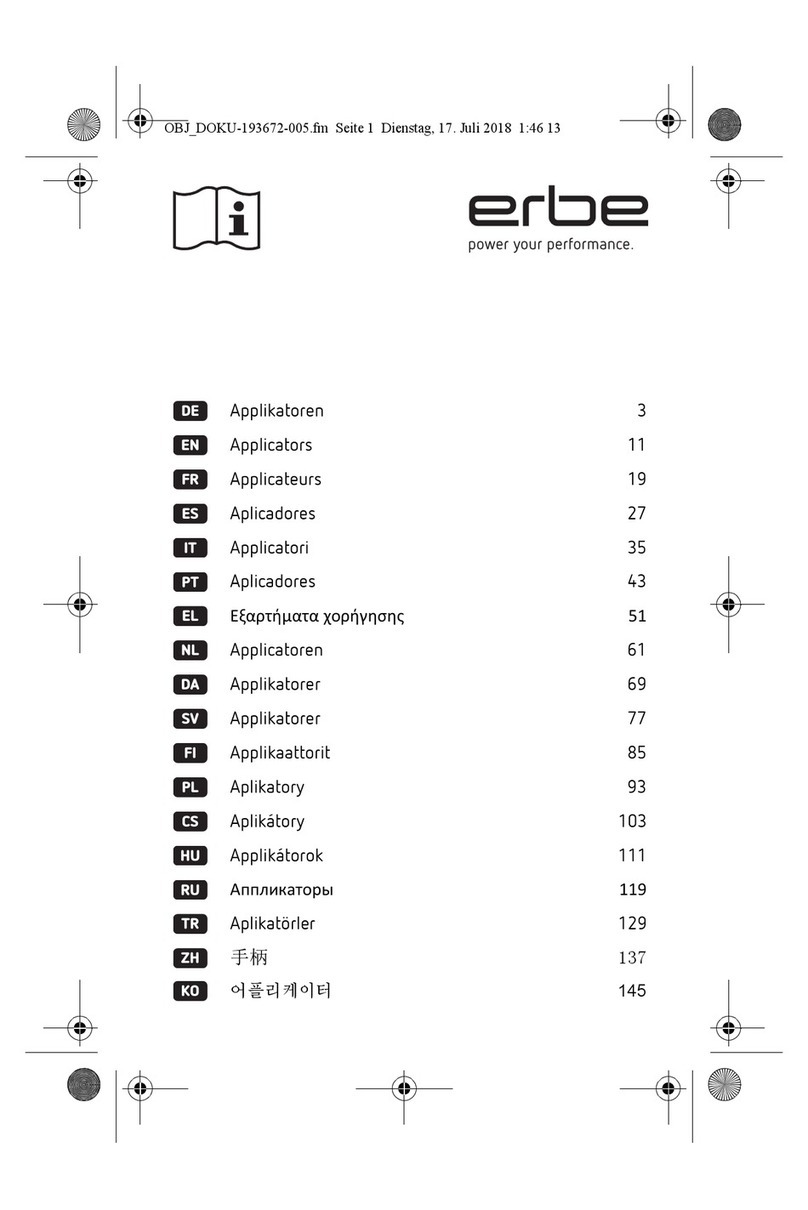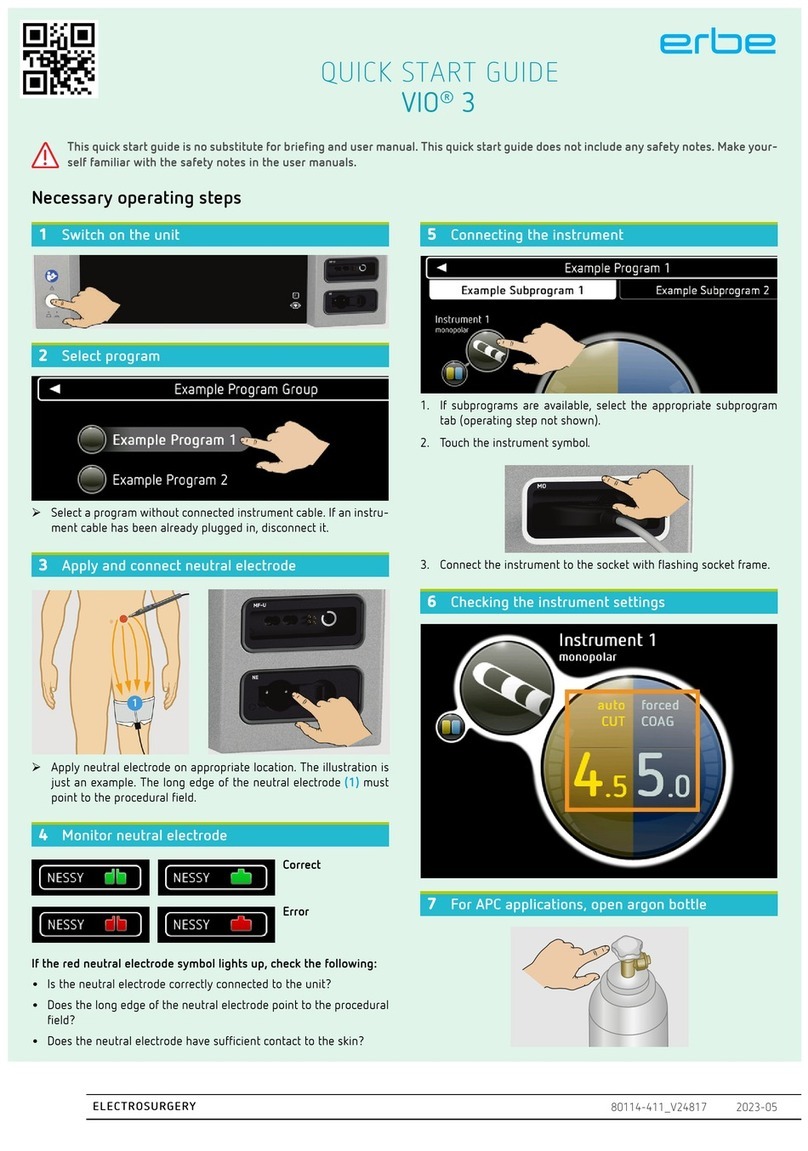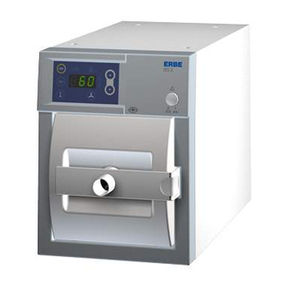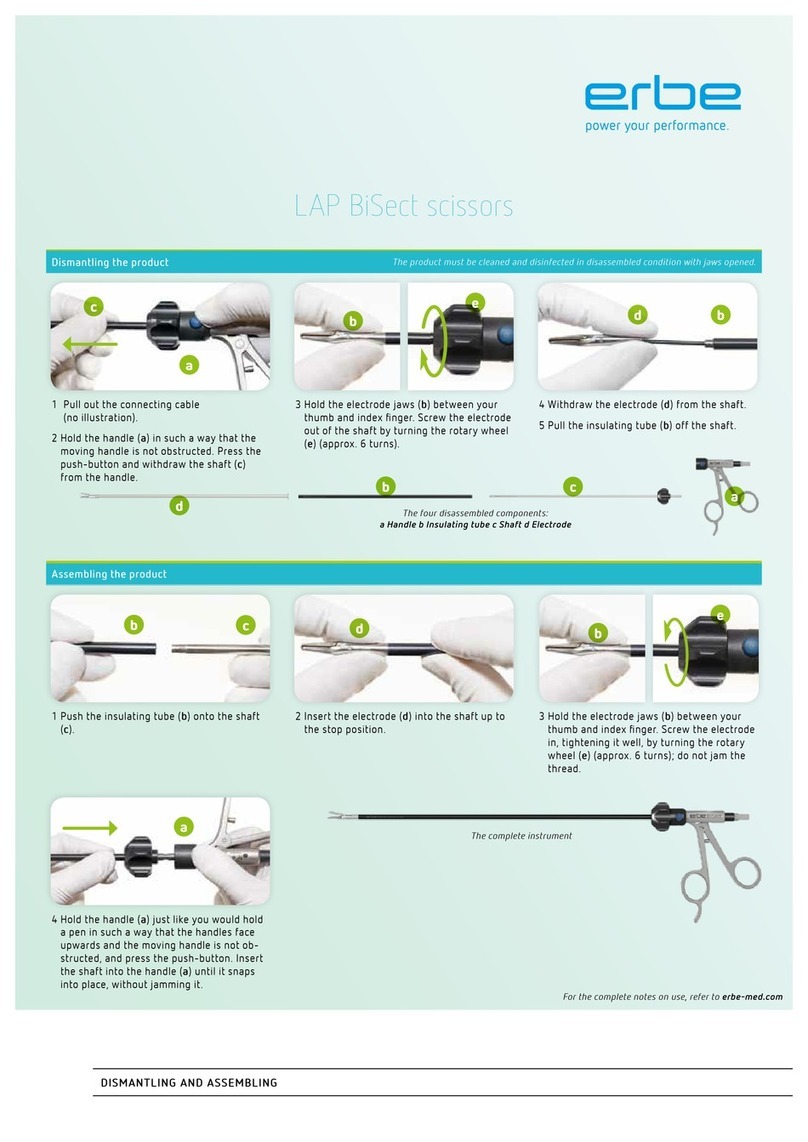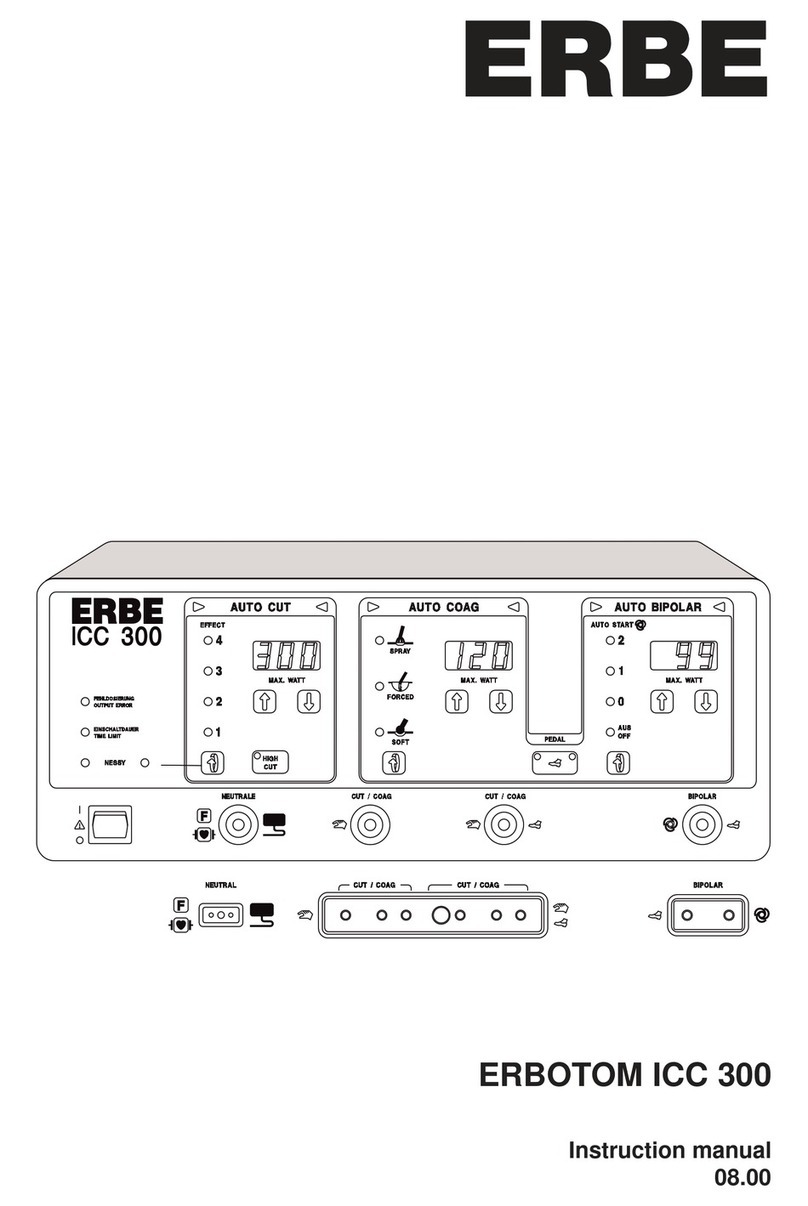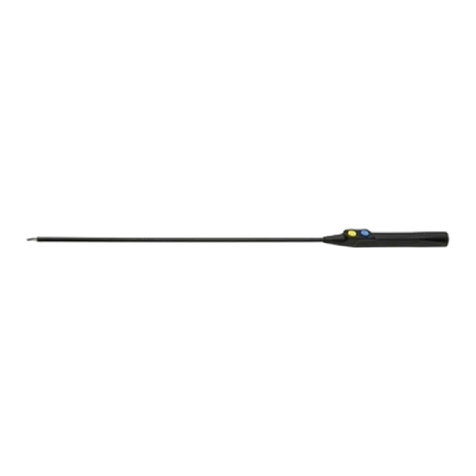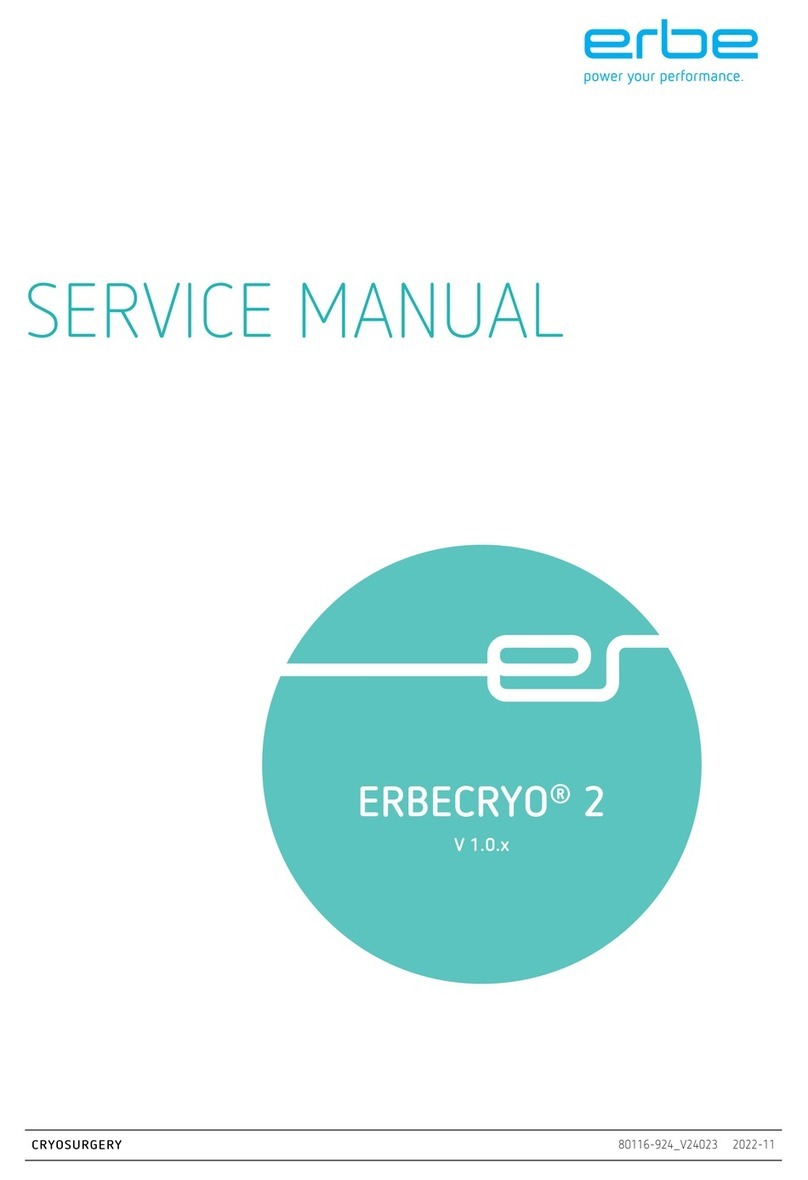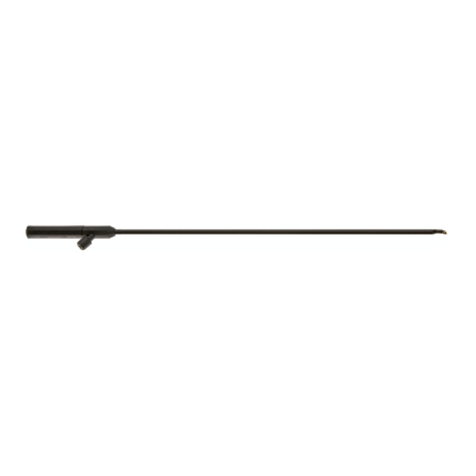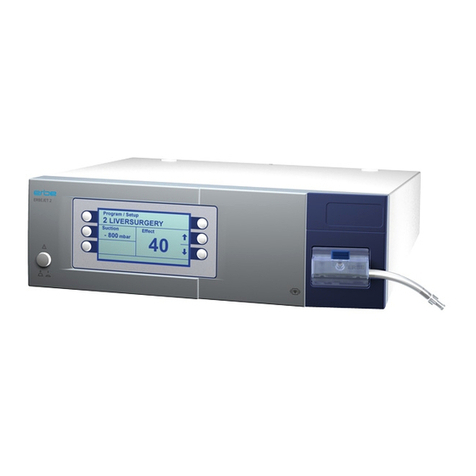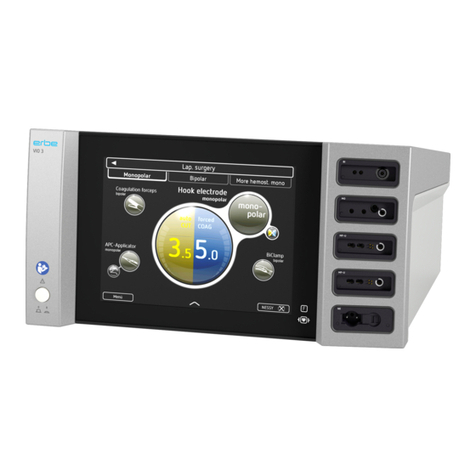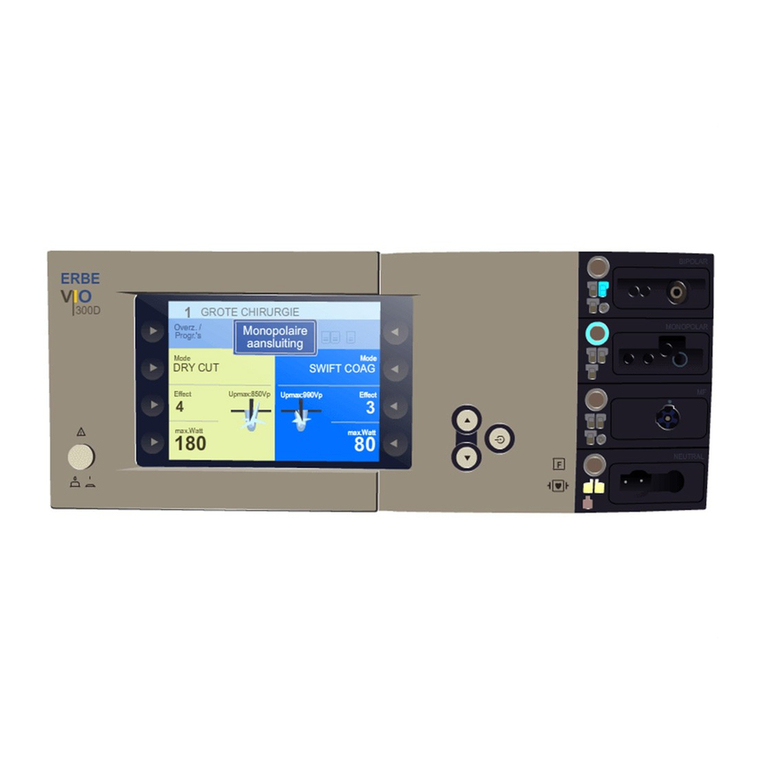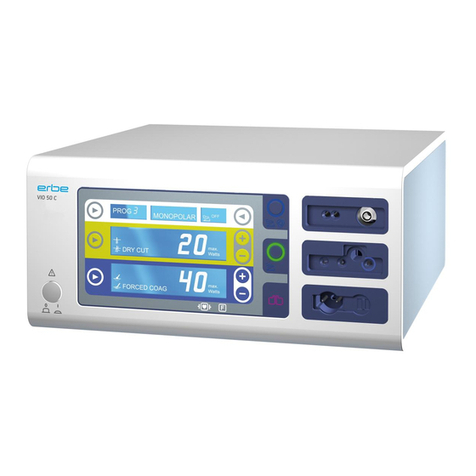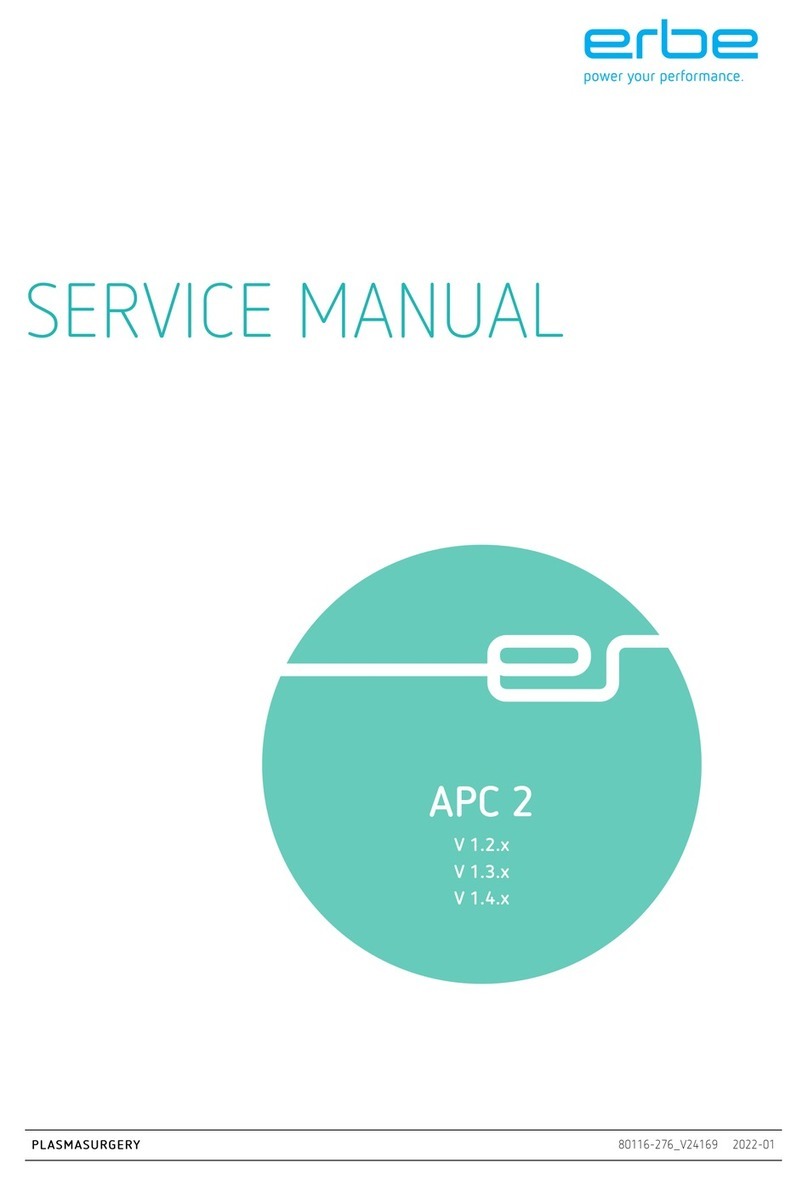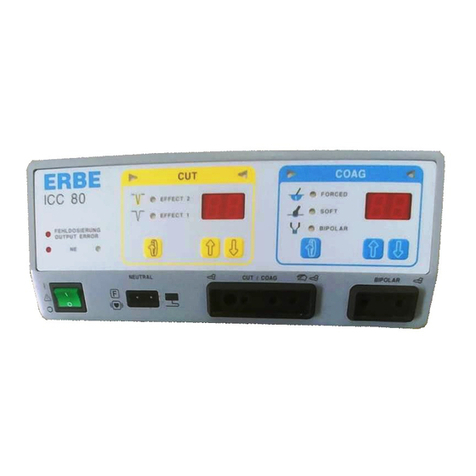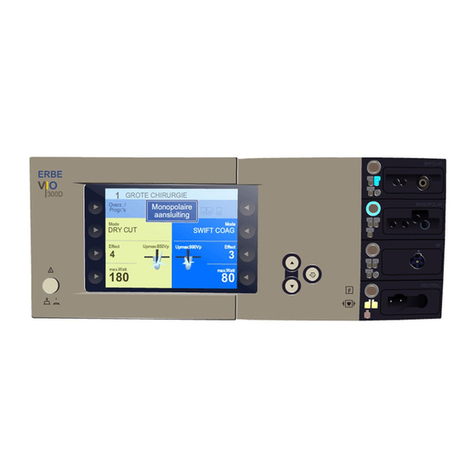5
Notes on Safety • 2
Dangersassociatedwithargonplasmacoagulation
Argon Plasma Coagulation is a monopolar high frequency surgical
method i.e., high frequency current flows through the patient's body to
the neutral electrode, as is generally the case in monopolar electrosurgery.
WARNING! All safety regulations concerning monopolar high frequency
surgery are applicable. One must therefore particularly ensure in endoscopic
applications that adjacent tissue structures are not inadvertently damaged
thermally by uncontrolled high frequency currents.
The active electrode must not directly contact the tissue, as this could trigger
the cutting effect and lead to uncontrolled coagulation of the contacted tissue.
WARNING! When performing electrosurgery on the gastrointestinal tract,
no flammable or potentially explosive endogenic gases must be present.
Particular care is required during the resection or coagulation of tumors
obstructing the colon using an HF loop or argon plasma coagulation.
Flammable gases must be suspected behind every stenosis in the colon. Be
certain to flush out at-risk sections of the intestine with CO2or argon before
activating the electrosurgical unit or argon plasma coagulator.
WARNING!Argon gas is non-combustible. It does not cause fire in burnable
materials or help them to burn. The high temperature of argon plasma, on
the other hand, can cause easily burning materials to ignite if oxygen or other
burnable gases are nearby or are mixed with argon when applied to these
materials (for example plastic insulation at the distal end of the bronchoscope
or a tracheal tube). This is especially true of highly concentrated or pure
oxygen. For this reason, please always observe the following rules:
1. Never permit oxygen or other combustible gases or fluids to enter the
tracheobronchial system before or above all during APC in the
tracheobronchial system.
2. When using APC in the tracheobronchial system for more than a few
seconds, alternate oxygen ventilation of the patient with APC, that is, use
them in turns.
3.Always keep the distal end of theAPC applicator in view in the endoscope
before and during activation of the argon plasma. Never activate argon plasma
if you cannot see the distal end.
Please read the special notes on this topic in CHAPTER 3: APC in flexible
endoscopy, APC in bronchoscopy à.
WARNING! The use ofArgon Plasma Coagulation units during laparoscopy
has been associated with gas embolisms in a small number of cases. The use
of argon should be limited to those situations where the advantages outweight
the risks.
To avoid gas embolisms, the argon flow rate should not be set so high that
argon is blown into open vessels.
To avoid gas embolisms and emphsema, do not direct the distal end of APC
applicators toward open vessels or press against tissue.
Burns, damage to tissue
Gas embolisms, gas emphysema
Danger of explosion of
endogenic gases, particularly in
the colon
Danger of fires in the
tracheobronchial system
